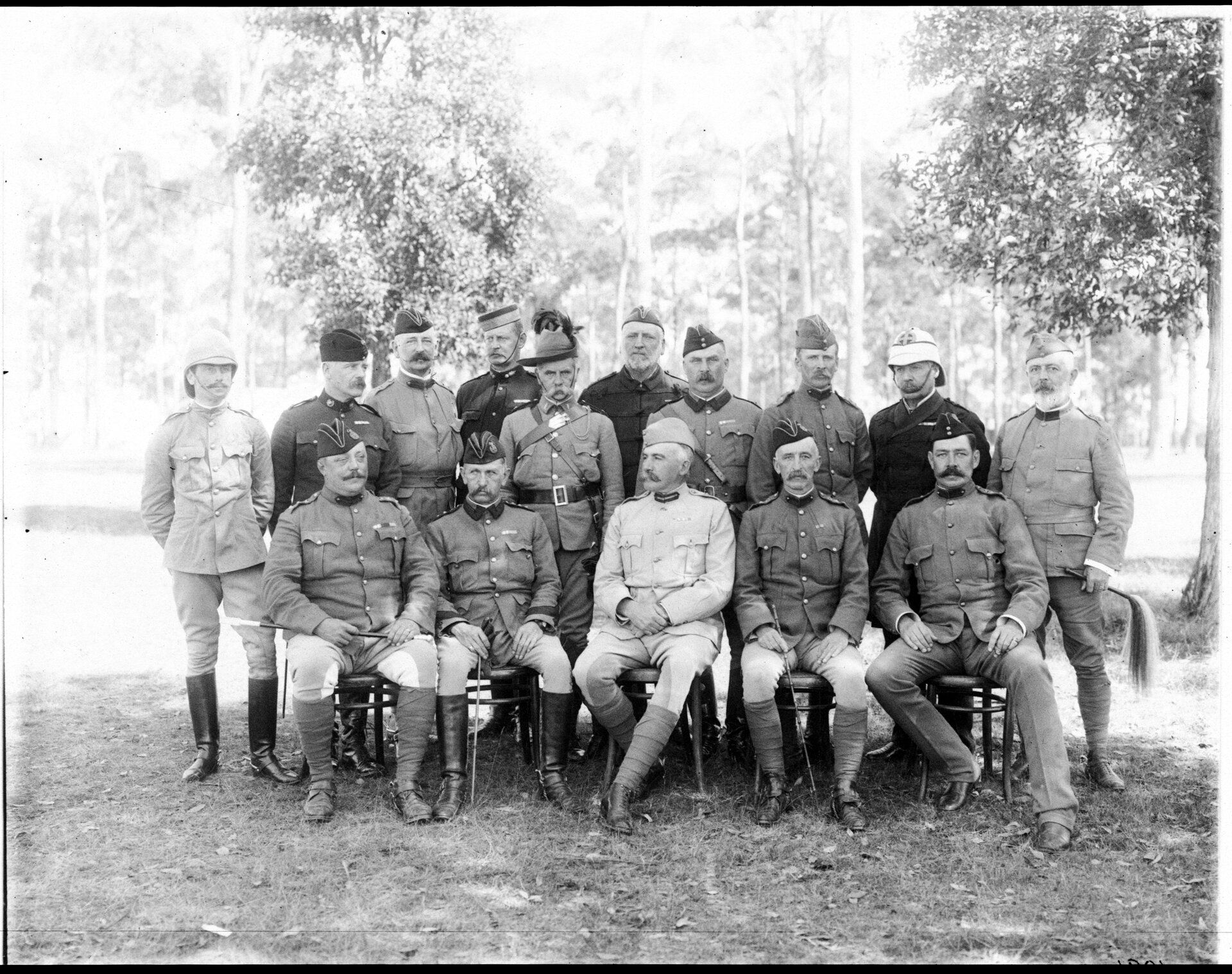Coastal fortifications guide
A brief overview of the major sources we hold that relate to coastal fortifications, defence works and military buildings
A brief overview of the major sources we hold that relate to coastal fortifications, defence works and military buildings.
Historical Overview
In the early years of the Colony, British military units had responsibility for external defence (as required), as well as assisting in establishing law and order within the settlement. British troops withdrew in 1870 and the States took over responsibility for their own defence requirements.
NSW embarked on a period of building of defensive fortifications, usually concentrated around port entrances and other points of vantage.
Port Jackson, Sydney
A battery was first established on George's Head in 1801, at the entrance to Port Jackson, but it fell into disrepair. During the 1870s a number of new defences were constructed, at Outer and Inner Middle Head, George's Head, South Head, Steel Point and Bradley's Head. Many of these batteries and tunnel complexes were immediately out of date due to developments of new armaments in the 1880s.
Bare Island Fort, Botany Bay
A five gun emplacement and bomb proof tunnels was completed on the island in 1885, intending to protect Botany Bay and Sydney from seaborn attack. Problems with the concrete used during construction were noticed as early as 1890 and by 1902 the fort was no longer part of coastal defences.
Fort Scatchley, Newcastle
This closed work fort complex was completed in 1882 on the eastern headland of the entrance to Newcastle harbour. It is named after Lt. Col. Peter Scratchley who was responsible for the planning of the fort.
Victoria Barracks, Sydney
Victoria Barracks was constructed on 29 acres in the Paddington suburb of Sydney between 1841 and 1848. It was designed by Lt. Col. George Barney and remains one of the best preserved examples of colonial Georgian buildings in Australia. Victoria Barracks remained the focal point of military activity in NSW, even after Federation.
List of main record series
Colonial Secretary's Correspondence
Series | Title | Dates |
|---|---|---|
Main series of letters received | 1826-1982 | |
NRS 985 (Reels 2870-2877) | Copies of letters to Naval and Military Officers Copies of letters to the above which include the Military Secretary, the Major of Brigade, the Aide de Camp, the Commandants of the Mounted Police, the Barrack Master, the Ordnance Storekeeper, the Officer Commanding Royal Engineers (later the Commanding Royal Engineer) to 1839, and the respective officers of Ordnance. | 1832-1900 |
Special Bundles - Defence of New South Wales, 1858-91 [4/7054A & B] Reports of the NSW Legislative Assembly 1858-91 relating to the defence of NSW. It includes theReport on the Proposed organisation of the Military Forces of the Australian Colonies, 1889 by Major General J. Bevan Edwards. A number of plans and sketches are attached to these reports relating to the matters of military defence. Includes details on Bare Island Fort, George's Head, Fort Scratchley (Newcastle) and Victoria Barracks. - Report and comments by military officers on Royal Commission on Military Service and report of committee on local defence, 1892-93, [4/906.1] Includes reports by Major General J. Bevan Edwards, Military Forces of the Colony, 1889 and proposed organisation of the Military Forces of the Australasian Colonies, 1890. - Fortifications of Albany and Thursday Island, 1889-1908 [10/4160] Includes information on intercolonial and interstate defence issues. - Defence reports brought together for Sir W Dennison, 1840-55 [4/1155.2]. Port Jackson sketch showing sites for works of defence, 1848 [Map 6384] has been extracted from the bundle and is filed separately. - Navy and Colonial Defence, 1886-93 [4/903.2] Includes information on general defence issues. Other Special Bundles of interest include: - Intercolonial conference Sydney, 1881 [4/830.3] - Torpedo Defence, 1886-88 [4/885.1] - Spectacle Island - occupation by Imperial Navy, 1890 [4/895.1 pt] - Sydney defence, 1867-71 [4/785.3, 4/786] |
Government Architect
See the Government (Colonial) Architect Guide 1837-c.1970. Look under military buildings and the names of the individual fortifications.
Maps and Plans
See the Index to Surveyor General's Maps & Plans, 1792-1886. Search the description field using a wildcard search (i.e. fort or military) for a more comprehensive listing.
Series | Title | Dates |
|---|---|---|
NRS 13863 [X857] | Plans showing location and outline of public buildings or blocks of land required for ordnance purposes | 1842-1847 |
Federation
The Commonwealth of Australia Constitution Act of 1900 empowered the Commonwealth to take over responsibility for naval and military defence of Australia. Control of a number of fortifications throughout NSW was assumed by the new Department for Defence.
Series | Title | Dates |
|---|---|---|
NRS 1138 [6/5544] | Report of the Committee into State Properties transferred to the Commonwealth The Committee was appointed to inquire into and report upon the value to State properties, prior to transfer to the Commonwealth. The report details such property for transfer as post and telegragh offices; custom houses; lighthouses and quarantine; military lands, buildings, fortifications; drill halls in country towns; and military stores. The report also contains block plans of 330 sites and sketch plans of Victoria Barracks. | 1903 |
Other sources
National Archives of Australia: Fact Sheet 24 - Coast fortifications in NSW
The Australian War Memorial
Trove
Peter Oppenheim, The Fragile Forts: the fixed defences of Sydney Harbour, 1788-1963, Canberra, Army History Unit, Department of Defence, 2004

Researching your military ancestors
An introduction to key sources in the collection for researching military personnel in the 1800s and early 1900s